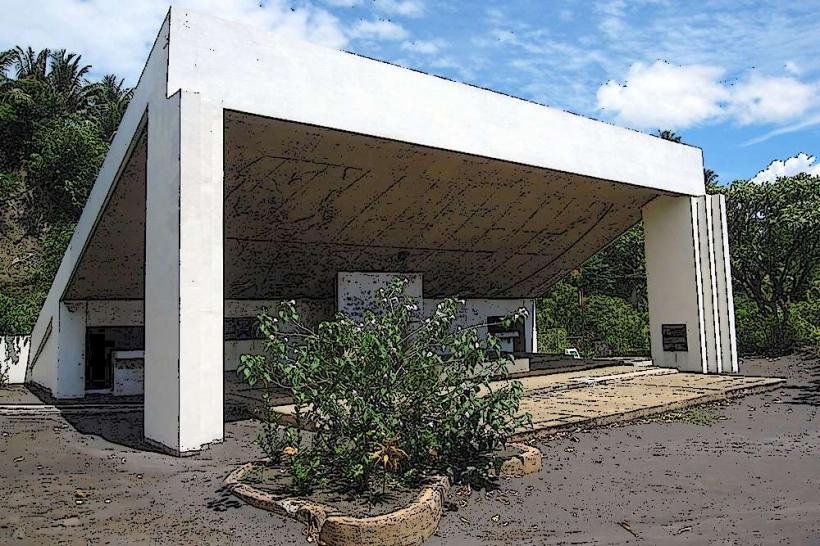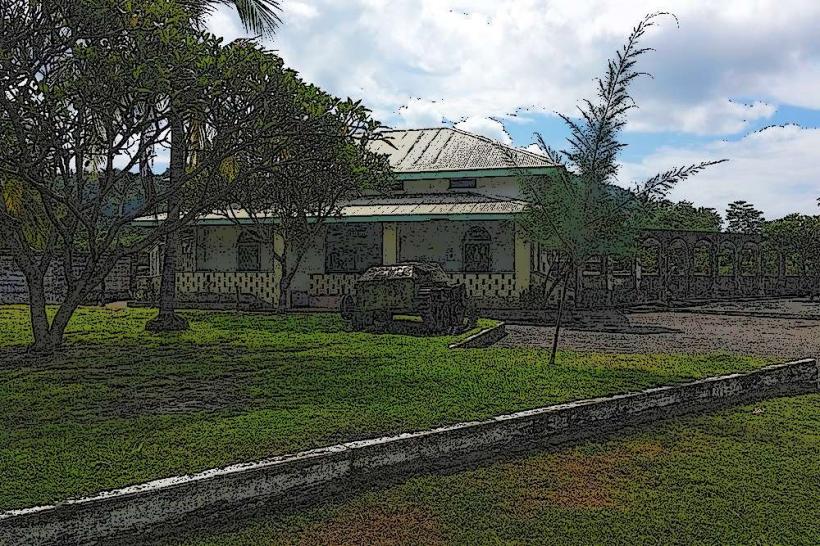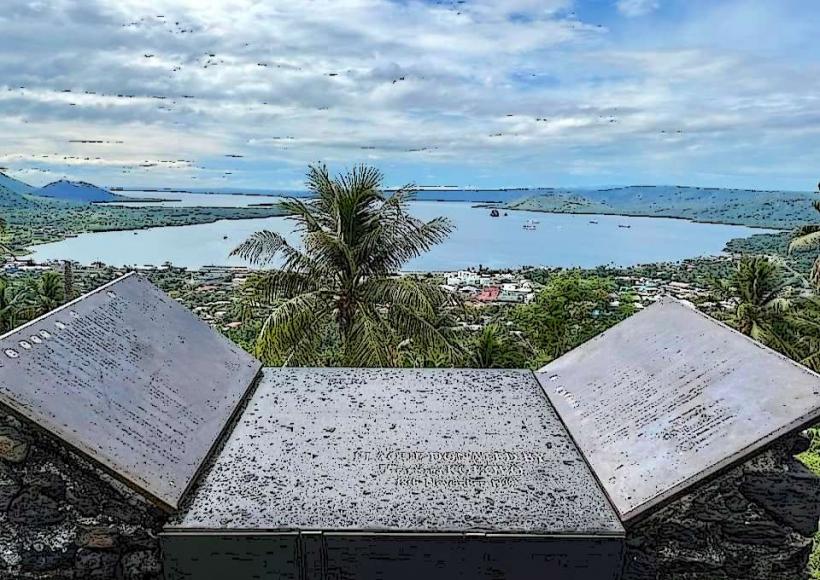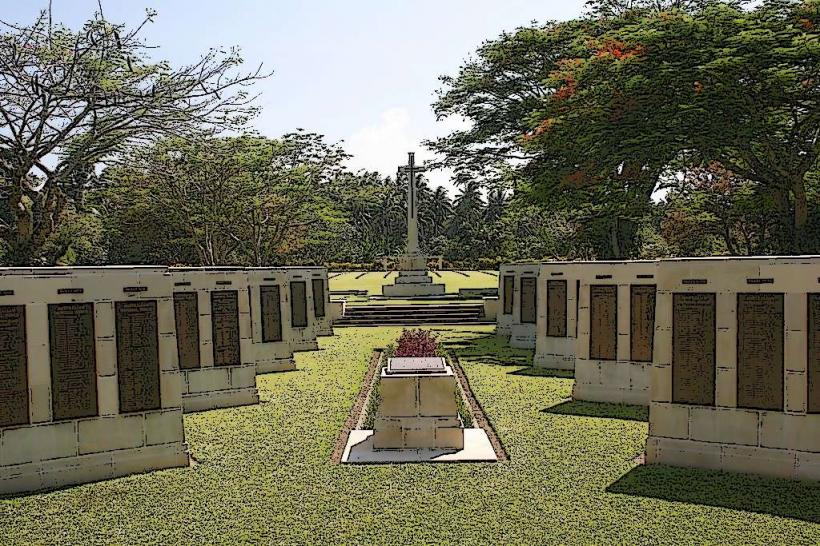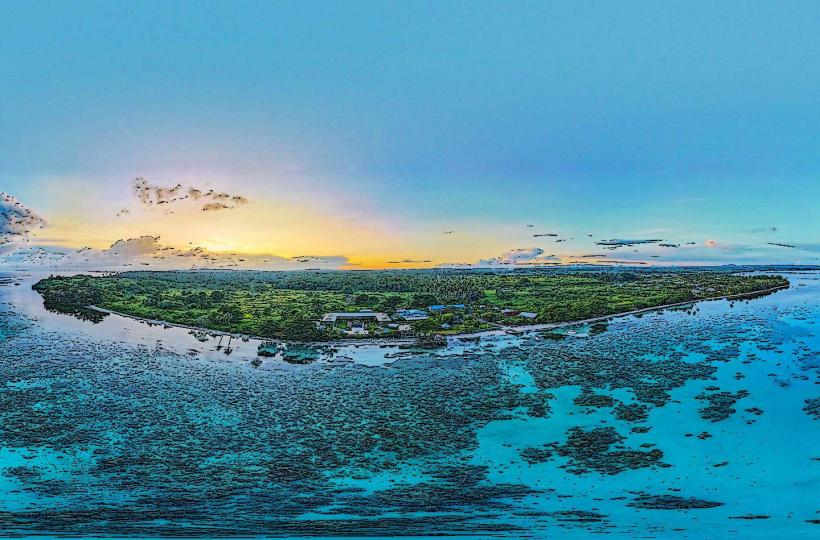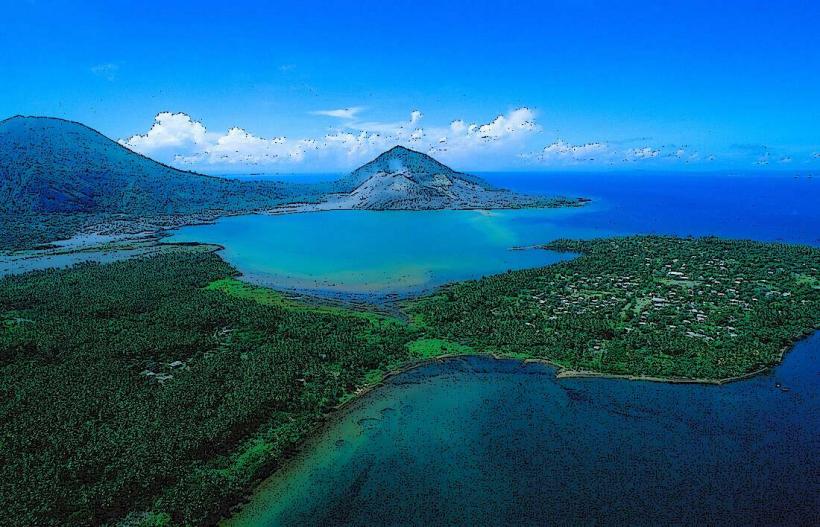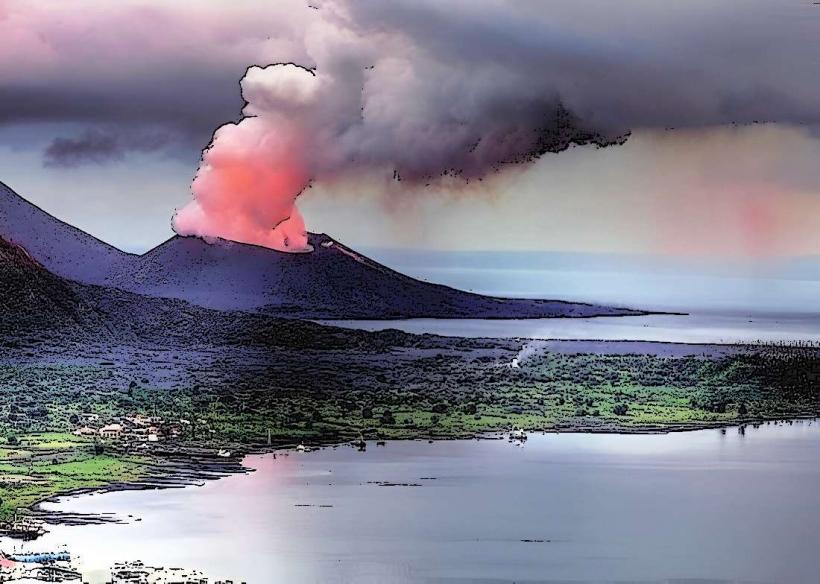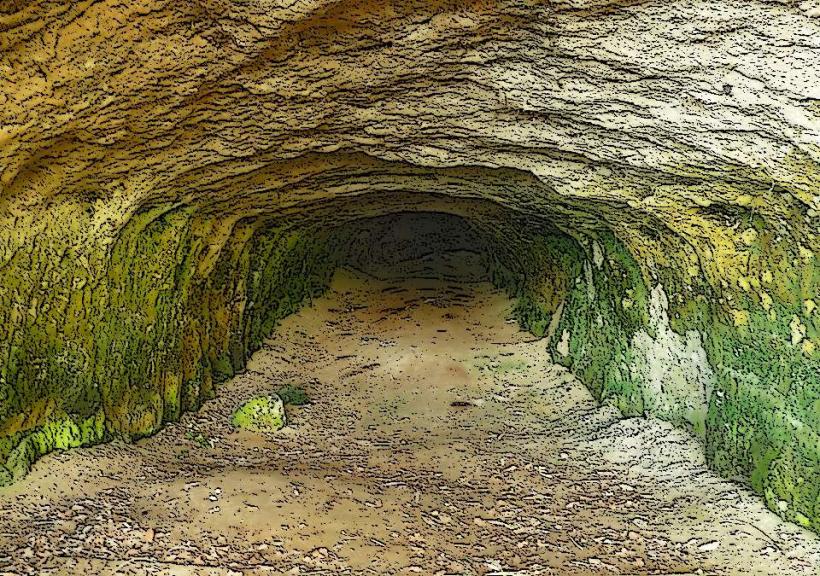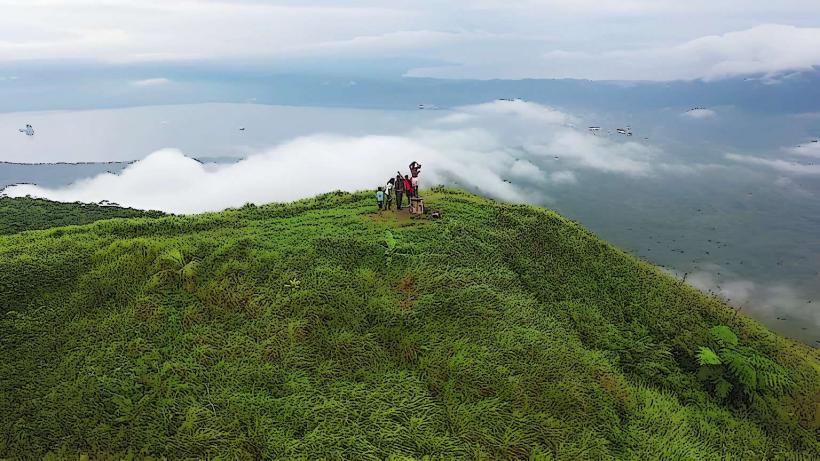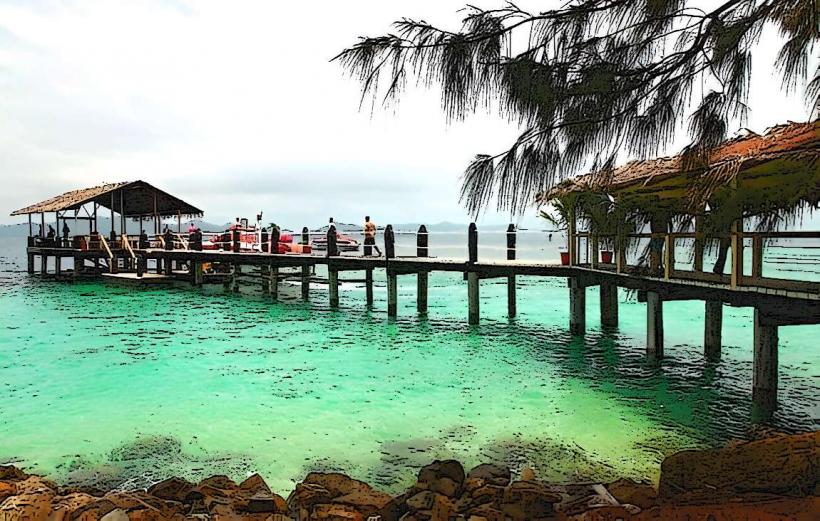Information
Landmark: Rabaul HarbourCity: Rabaul
Country: Papua New Guinea
Continent: Australia
Rabaul Harbour is a stunning natural harbor located in Rabaul, a town on the Gazelle Peninsula in East New Britain Province, Papua New Guinea. Known for its dramatic beauty and strategic importance, Rabaul Harbour is surrounded by active volcanoes, making it one of the most unique and visually captivating harbors in the world. Historically, it has played a significant role in trade, military operations, and local culture.
Key Features and Historical Significance:
Geographical Features:
- Rabaul Harbour is surrounded by a volcanic caldera, which was formed by past volcanic eruptions. The caldera is approximately 14 kilometers wide and has steep, rugged sides, making it an iconic geographic feature.
- The harbor is protected by several small islands and peninsulas, including Matupit Island, Rabaul Island, and the Bogia Peninsula, providing a safe anchorage for ships.
- The harbor itself is deep, with natural channels that allow for the safe passage of large vessels, contributing to its use as a port for shipping and naval operations.
Volcanic Landscape:
- Rabaul Harbour is surrounded by active volcanoes, including the Tavurvur volcano and the Rabaul volcano, which are both located on the rim of the caldera. The presence of these volcanoes contributes to the dramatic landscape that surrounds the harbor.
- The town of Rabaul itself lies within the caldera, and the harbor's proximity to these volcanoes makes it particularly vulnerable to eruptions. The 1994 eruption of Tavurvur, which significantly affected Rabaul, is a reminder of the ongoing volcanic activity in the region.
- The ash and lava flows from these volcanoes have shaped the local environment and created a unique ecosystem that is distinct from other coastal regions.
Historical Role:
- Rabaul Harbour was of strategic importance during World War II. It was a key port for the Japanese Imperial Navy, and Rabaul became their major military base in the South Pacific. The harbor was heavily fortified by the Japanese, and many naval and air battles took place in the surrounding waters.
- The Allied forces launched numerous attacks against Rabaul and its harbor during the war, using air strikes and naval engagements to weaken the Japanese presence. As a result, many wrecks of warships, aircraft, and submarines can still be found in and around the harbor, making it a popular site for wreck diving.
- The harbor's strategic location also made it a key hub for trade and military logistics, and its importance in the region’s economy persists to this day.
Economic Importance:
- Rabaul Harbour remains a vital port for both commercial shipping and fishing industries in Papua New Guinea. The harbor serves as a primary entry point for goods and supplies to the surrounding regions, including agricultural products and materials for the local mining industry.
- The harbor's proximity to the fertile agricultural areas of the Gazelle Peninsula and the New Britain Islands makes it an essential point for the export of products such as cocoa, copra, and coffee.
- Fishing vessels also use the harbor for local and international trade, with tuna being a key export. The region’s proximity to rich fishing grounds contributes to the economic activity in the harbor area.
Tourism and Scenic Beauty:
- The scenic beauty of Rabaul Harbour is a major draw for tourists. Visitors are attracted by the breathtaking views of the harbor surrounded by active volcanoes and lush greenery, offering opportunities for sightseeing, photography, and exploration.
- Snorkeling and diving around Rabaul Harbour are particularly popular, with the harbor offering opportunities to explore coral reefs, underwater volcanic vents, and the wreckage of World War II ships and aircraft. These wrecks, which have become artificial reefs, attract divers from around the world.
- Visitors can take boat tours around the harbor to explore its islands and volcanic features, including a view of the Tavurvur volcano, which erupted in 1994, causing significant damage to Rabaul town and the surrounding area.
- The Rabaul Volcano Observatory, located nearby, also offers a chance to learn more about the volcanic activity in the region and to observe the behavior of the volcanoes around the harbor.
Cultural and Social Importance:
- The local communities around Rabaul Harbour, including indigenous villages, have traditionally relied on the harbor for fishing, transportation, and trade. The people living around the harbor maintain a strong connection to the sea and the natural resources it provides.
- The harbor is also used for local ceremonies and cultural events, with some indigenous groups continuing to practice traditional fishing methods and boat building.
- Rabaul has a rich cultural history, with diverse influences from German colonialism (early 20th century), Australian administration, and Japanese occupation during World War II. The harbor and surrounding region are integral to understanding the blend of cultures and histories that have shaped the modern-day town and surrounding communities.
Environmental Considerations:
- Due to the ongoing volcanic activity in the region, the environmental stability of Rabaul Harbour is closely monitored. Eruptions and ash fall can affect both the ecosystem and human activities, such as fishing and tourism.
- The harbor and surrounding areas are home to a rich diversity of marine life, including coral reefs, fish species, and sea turtles, all of which are essential to the local ecosystem and economy. Efforts are being made to preserve these natural resources through sustainable practices in both fishing and tourism.
Conclusion:
Rabaul Harbour is a stunning and historically significant site in Papua New Guinea. It has been shaped by volcanic activity, war, and the resilience of local communities. Today, it is not only a vital port for commercial and economic activities but also a major tourist destination, offering unique opportunities for exploration and remembrance. The harbor’s beauty, history, and ongoing volcanic activity make it one of the most fascinating locations in the Pacific region, attracting visitors, historians, divers, and researchers from around the world.

